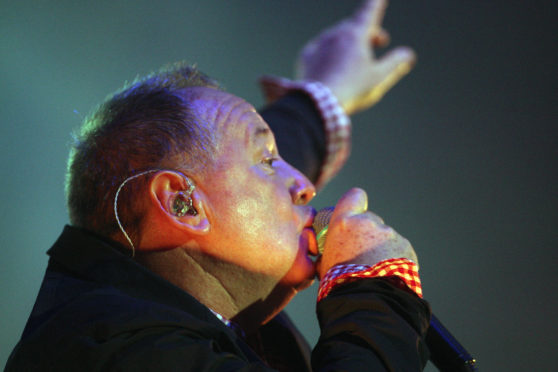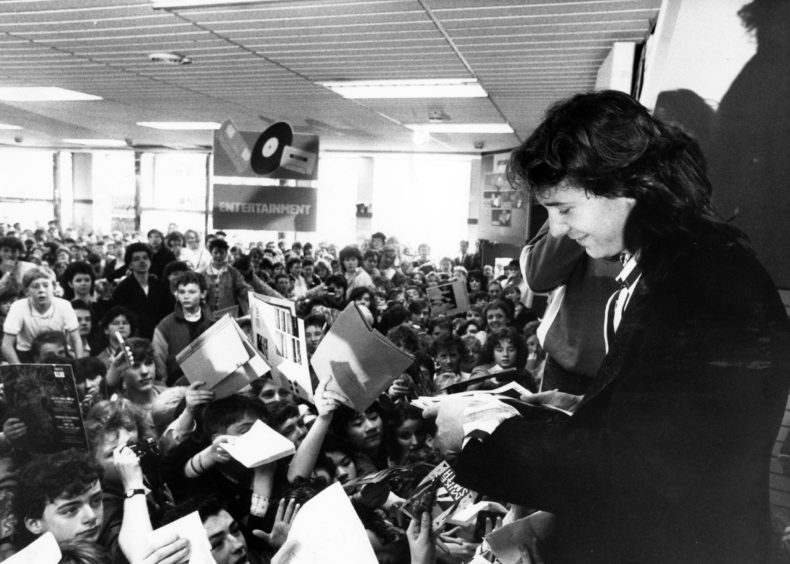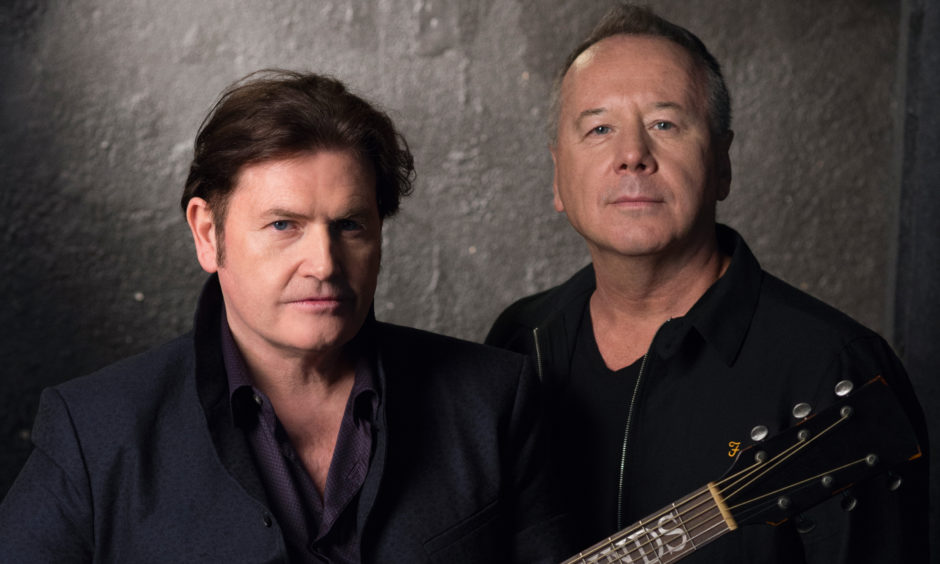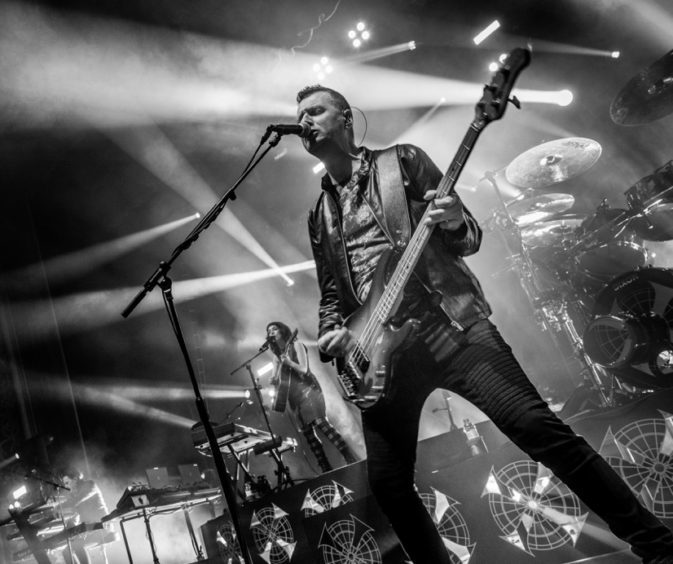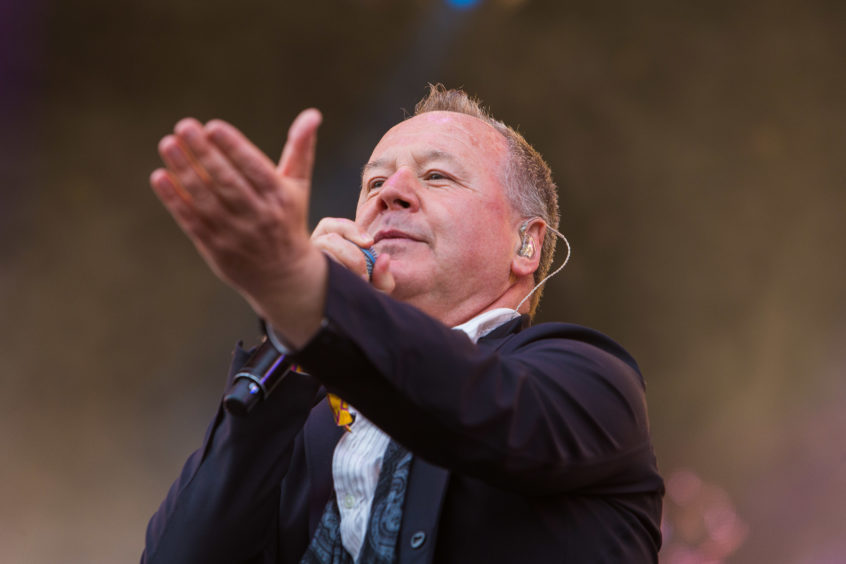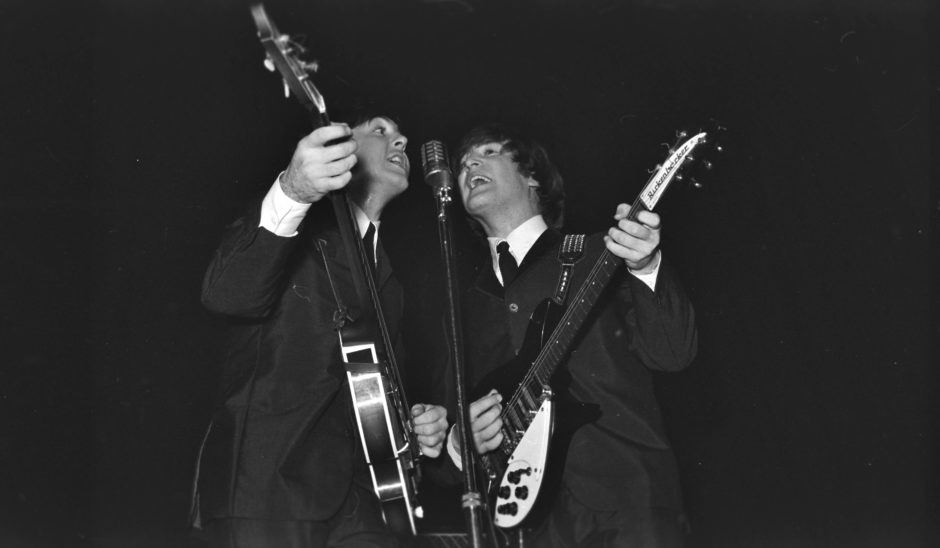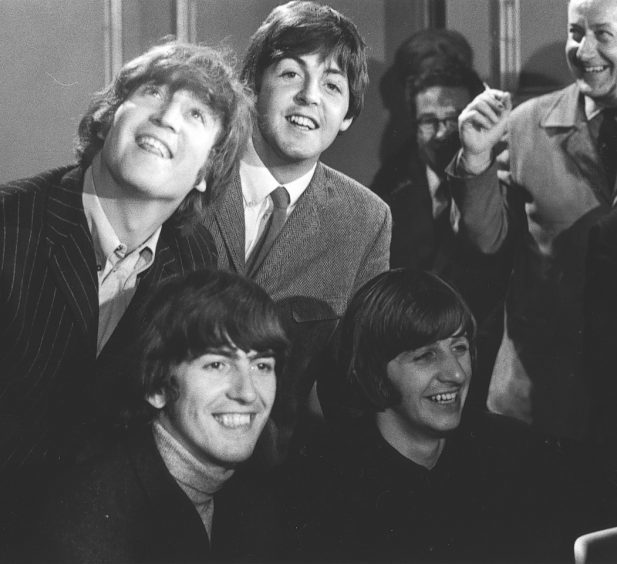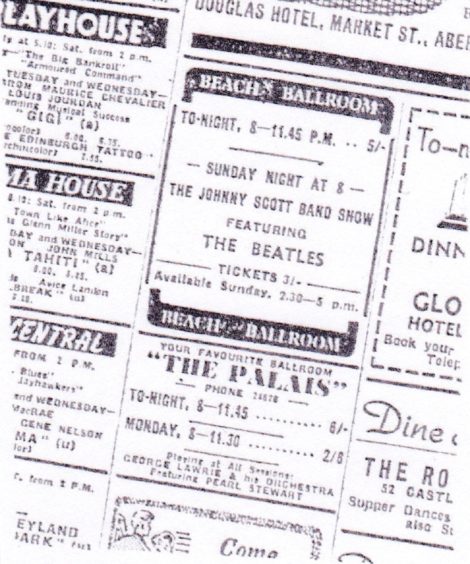They’re the quintessentially Scottish band who have been part of the fabric of global music for the last 40 years.
And whether strutting in the spotlight at Live Aid with Bob Geldof and many of the greatest names in pop and rock, or making an appearance at Stonehaven’s Open Air in the Square event to usher in the New Year in 2014, Simple Minds are still alive and kicking after more than four decades of recording and touring.
Long and winding road
There can’t be many people anywhere on the planet who haven’t heard such massive chart-toppers as Don’t You (Forget About Me), Belfast Child, Mandela Day, Promised You a Miracle and Waterfront.
But, in common with most emerging acts, Jim Kerr and his colleagues initially had to perform in front of small audiences and get used to the acoustics of low-key venues when they originally embarked on the long and winding road towards success.
And now, the writer of a new book – which has been backed by the band – wants to hear from those who were there in the early days when Simple Minds earned their spurs across their homeland and took part in a series of concerts in Aberdeen.
Richard Houghton has previously worked on literary ventures featuring the likes of The Beatles, the Rolling Stones and The Who, so he’s no stranger to chronicling the memories of music aficionados who can say: “I was there…”
He explained that the Book of Brilliant Things is a ‘people’s history’ of the band, which will bring their careers to life through the words of their fans, both from the 1980s and the 21st century.
The project is an official Simple Minds book, backed by singer Jim Kerr and guitarist Charlie Burchill and is being collated by Mr Houghton.
He said: ‘Simple Minds are possibly the biggest band ever to come out of Scotland and I’m looking for fans who have seen them in concert to share their memories with me.
“They played Aberdeen several times early in their career, with six shows between 1978 and 1980, including two appearances at Ruffles, two shows at Aberdeen University and concerts at both Robert Gordon College and the Music Hall.
“For one of the Ruffles gigs, Simple Minds were supporting The Stranglers and were bottom of a bill that should also have featured The Skids.
“Unfortunately, the latter failed to show up on the night.
“But one of the university shows was also supporting Magazine, which was the breakthrough tour for the band.”
Simple Minds have had eight UK top 10 hits, with Belfast Child reaching number one.
The band, who began their journey in the late 1970s, have sold more than 60 million albums worldwide and have toured extensively around the world.
Looking for memories
Mr Houghton added: “Incredibly, it’s now over 40 years since Simple Minds were formed and now seemed the right time to capture the band’s history.
“We are looking for people’s memories of discovering the band’s music and becoming a fan and what they remember of the shows they saw.
“That could be a recent gig such as the 2015 appearance at the AECC or it might be from early on in their career.
“I compiled the books on The Beatles and the Rolling Stones because I knew that there were people who had seen these acts more than 50 years ago who had stories to tell and I wanted to capture the musical and the social history.
“Nowadays, almost every gig that is ever performed is captured on mobile phone footage and uploaded to YouTube as soon as the show has taken place.
“But shows from earlier years are captured only in the mind’s eye – even cameras weren’t commonplace then unless you were a professional photographer – and preserving the memories of people who saw bands back then is something that can only really be done by getting them to tell their stories.
“Despite the passage of time, some folk have crystal clear memories of going to gigs, either because they saw an iconic band in the early stages of their career or because a concert marked another significant event in their life such as meeting their future spouse, meeting the band or watching the first performance of a classic song!
Jim has shared his Spotify playlist for June along with the reasons for his choices!
It includes Kraftwerk, Detroit Spinners, The Stooges, Sparks, Echo And The Bunnymen, Sinead O'Connor, Dream Academy & Tom Waits.
All the detail here: https://t.co/w2PIQdOAtC pic.twitter.com/1Kxt9LVrvb— Simple Minds (@simplemindscom) June 1, 2020
“They are all great stories that need retelling and sharing with the world at large and I am sure there will be people with interesting tales to tell about Simple Minds.”
The Book of Brilliant Things will be published by This Day In Music Books in October.
Mr Houghton can be reached at newsimplemindsbook@gmail.com
Fun with the Fab Four
Mr Houghton has already investigated the birth of The Beatles 60 years ago.
They later developed into the Fab Four; the most famous group in pop music history.
But were you aware that John Lennon, Paul McCartney and George Harrison – minus Ringo Starr – once toured the north-east of Scotland as a backing group and were called The Silver Beetles?
Or that, during their visit, McCartney was known as Paul Ramon and Lennon had the words Long John appended to his name?
This was long before the days of the Fab Four, George Martin, and Sergeant Pepper, as the Liverpool group took the world by storm.
OTD 06JAN1963 On the final appearance of their five-stop tour of Scotland, the #Beatles perform at Beach Ballroom, Aberdeen. pic.twitter.com/o52XwFoG0p
— Beatles Fab 4 Ever (@beatlesfab4ever) January 6, 2018
Instead, in the spring of 1960, the three youngsters backed singer Johnny Gentle on a series of gigs in Inverness, Fraserburgh, Keith, Forres, Nairn and Peterhead.
The gigs were staged at such venues as the Northern Meeting Ballroom in Inverness, Dalrymple Hall in Fraserburgh and The Rescue Hall in Peterhead, between May 20 and May 28.
Some of the concerts were well-attended, but Mr Houghton discovered that others attracted barely any audience at all.
He said: “They were known as the Silver Beetles at the time and they didn’t have their own drummer.
“John, Paul and George were joined by Stuart Sutcliffe, who subsequently went to Hamburg with them, and Tommy Moore, who was a fork-lift truck driver and a lot older than the rest of the boys.
“The tour had been arranged by Larry Parnes, who was the Simon Cowell of his day, and they secured the gig after passing an audition against competition which included Gerry and the Pacemakers.
“They received a fee of £60 for performing seven shows in eight days and they also had to pay for their own accommodation on their travels.
“But, despite that, it was an important next step up on the ladder.”
After the Peterhead concert, McCartney recalled: “I think there are a few posters of us with the double ‘e’, but we soon dropped the ‘Silver’ because we didn’t really want it.”
A few months later, their name became simply The Beatles and they released a little ditty called Please Please Me.
The rest, as they say, is history.
